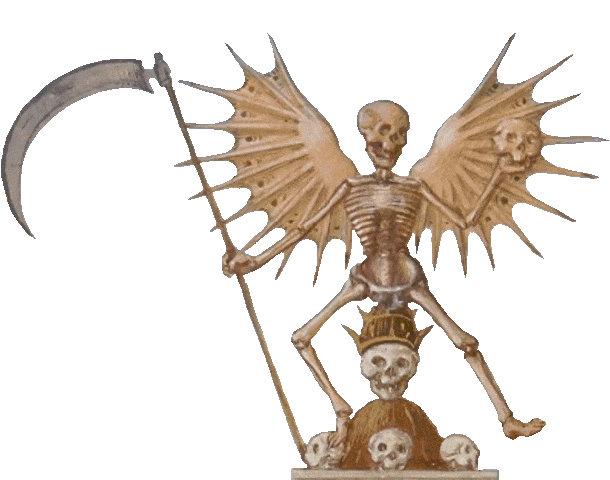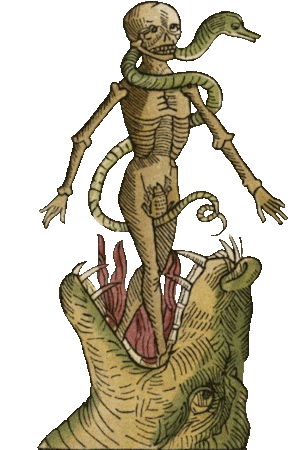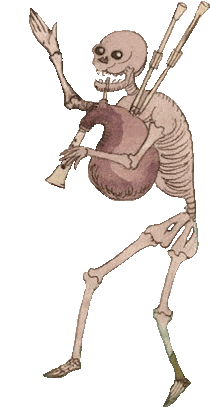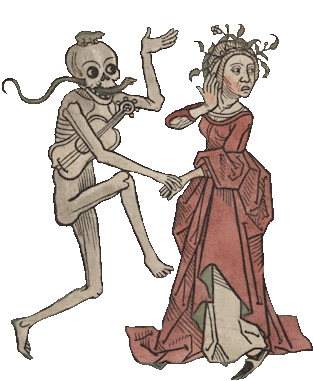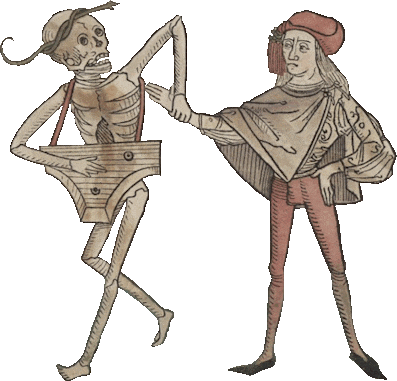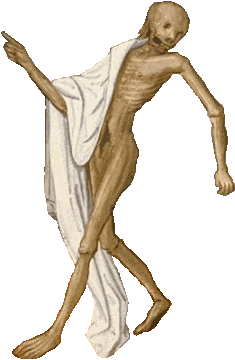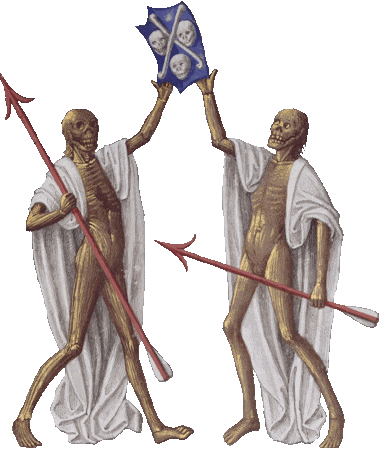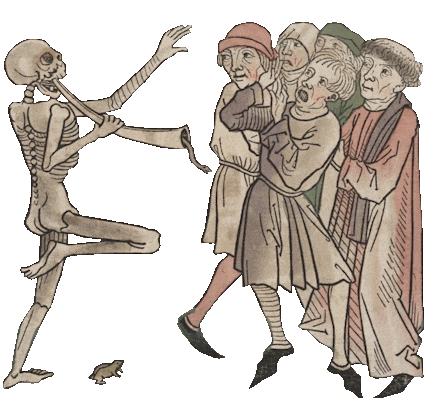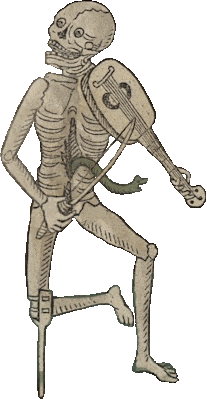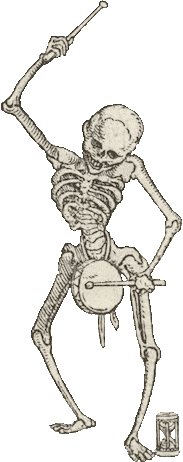Ossuaries are containers for storing skeletal remains. They can range from small boxes for individual remains to entire structures, such as the Paris catacombs. Cemeteries in medieval and early-modern European cities often had limited space. To deal with this, bones were sometimes removed from old graves and placed in ossuaries to make room for new graves. Starting around the 16th century, some of these ossuaries began using bones to create elaborate decorations and art, such as garlands and mosaics.
Bones and skeletons are also a common subject in medieval and Renaissance art as death was, unfortunately, an everyday experience. A popular artistic allegory was the Dance of Death or Danse Macabre, which depicts the dead dancing and playing music while leading people to their graves. Kings, peasants, young, and old all participated in the dance as a reminder that death can come to anyone and at any time. This site has a ton of examples of various dances of death from many periods.

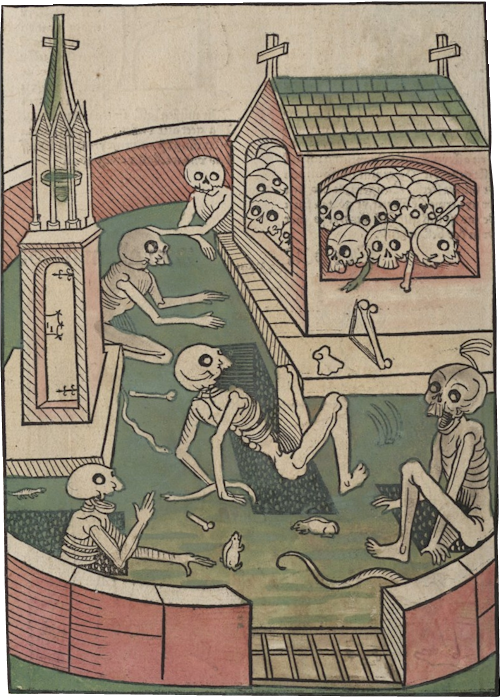
Oh look! Here are some skellies getting up to have a dance now! Not to worry, they're not interested in claiming souls at the moment, just enjoying a nice tune.
